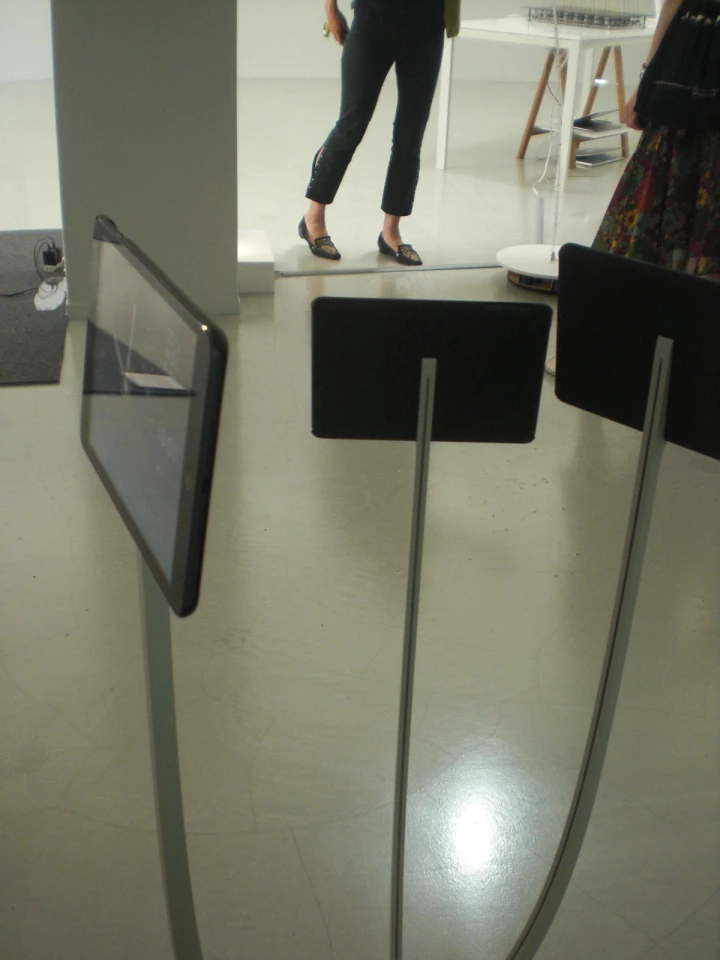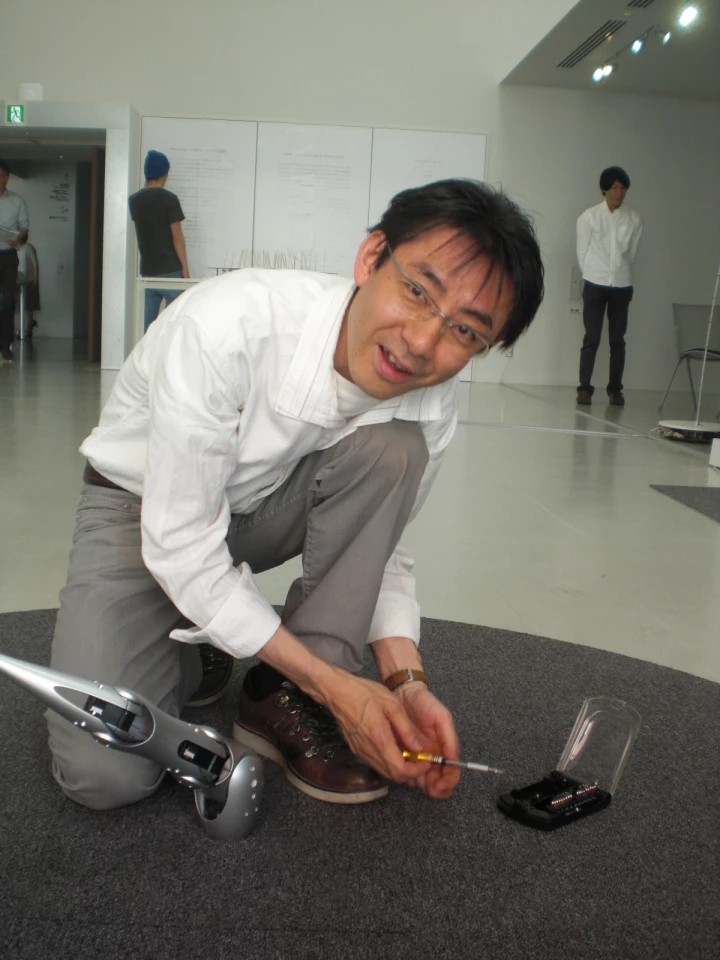Robots will form a big part of our lives in the future, but despite the imagination and foresight of the best science fiction writers and filmmakers, it's still not exactly clear how will we accept and interact with them. Researchers at the Yamanaka Laboratory at the University of Tokyo have been investigating the field of robot-human interaction since 2007 by adding different kinds of biological behavior to a series of robotic sculptures. Recently almost all of these sculptures were gathered together for the Bio-likeness prototype exhibition. Gizmag went along to get a feel of their work.
In Japan you can see ASIMO use sign language and a recorded voice, converse with Pepper and interact with exceptionally life-like robot visitor guides. But these human-like forms and actions tend to give us a creepy feeling, a feeling known by scientists as the "uncanny valley."
Uncanny Valley
The term uncanny valley was first coined in Japan in 1970 by robotics pioneer Masahiro Mori. He noted that the more human like a robot gets in both looks and actions, the more we accept it ... but only up to a point. At this point – the uncanny valley – our acceptance and empathy turns to rejection and revulsion, even if we love robotic forms. Mai Tsunoo, the Assistant Designer at the Yamanaka Lab, explained to Gizmag that the teams' approach to bridging the uncanny valley is to explore the experience of using biology from other life forms as the basis of robots."We aim to just give a sense of life, so you feel you are in the presence of intelligence." says Mai Tsunoo.
The 2014 exhibition was the first time the Yamanaka Laboratory had gathered together almost all of their Robotic sculptures. Each one explores a different Bio-likeness motion that a robot could have. The exhibition served as a unique opportunity for the public to interact with the sculptures and for the students to get feedback on their work.

Bio-likeness sculptures
Many of the projects are undertaken either with co-operation from other laboratories, with the Bio-like display and Fuhler made in conjunction with companies. The oldest sculpture on display was Flagella(2009), named after the rotating organ in a cell. Though made of hard plastic, its many tentacle like arms look soft and flexible – an effect achieved by cleverly positioning the center of rotation on each of the joints. The rotation movements are controlled by simple servo motors and the ends of its fingers rely on gravity for their direction and movement. The result is a smooth motion with an impression of intelligence as the arms seem to move in a coordinated way. Not creepy at all.

Cilium (2010) is a carpet of wire that resembles a sea anemone. Each wire is free to move in any direction, but they only come "alive" if you touch one of the tips. When you do, all the surrounding wires move their tips towards the one you are touching and all their immediate neighbors copy this action. The resulting movement gives the impression of a collective intelligence, where the entire group acts on a common thought, even affection or love. When we touched two wire tips in two different places at the same time, the group just split their action in two – half loved towards the finger on my right hand and the other half loved the finger on my left hand. When you take your finger away, they just lose interest and return back to their vertical resting state. More fun than spooky.

Planula (2011) consists of a vertical and flexible post with a translucent ball mounted on top. An electrostatic capacitance sensor is mounted in the ball on this fishing rod like structure, actuating wires to move the ball. It moves in a kind of drifting motion, which invites you to touch it. However, when you do, it rejects your action by aggressively moving away in the opposite direction. This work has the opposite emotional effect to Cilium – however kind and gentle your action and intent is, you get shunned.

The next prototype was designed to show what Bio-likeness could do to a real product. Called the Bio-like display (2013), it was made in conjunction with Mitsubishi Electric and has three orbiting displays that move in a random pattern until you sit down in the chair. Once they recognize you, using face recognition technology, the screens gather together and display your personal preferences in video or webpages. As the user moves away, the three units drift off in different directions and go back to showing different information. Proposed as a replacement for both the TV and the computer, the display certainly adds a more personal touch to an otherwise inanimate object and we could very easily to see it in our living environment.

The final interactive robotic sculpture Gizmag tried – Fuhler (2012) – is the result of a collaboration between the Yamanaka Laboratory and Dr. Manfred Hild from the Neurorobotics Research Lab at Humboldt University of Berlin. Fuhler looks like an arm holding a fishing rod like structure at its end. It rests in a vertical position, but if you pull on the cord attached to the flexible rod, it will resist you and pull in the opposite direction – sort of like a dog that's reluctant to give up its bone. Similarly, if you push on the main arm, it pushes back.

This robot was mesmerizing to watch and interact with. Its creator, Ichiro Esumi, explained that the physical actions Fuhler displayed could be incorporated into a personal robot with fast physical reactions that could pull or push you away from danger.
The video below provides a closer look at these amazing robotic sculptures in motion.
























